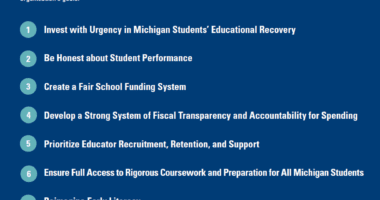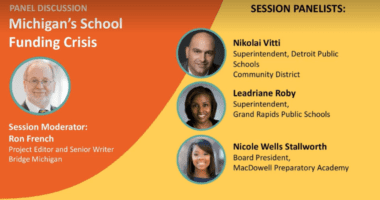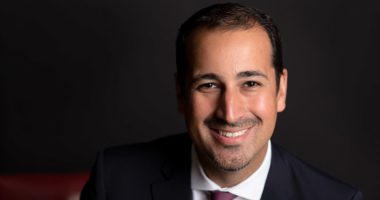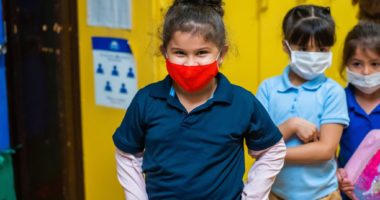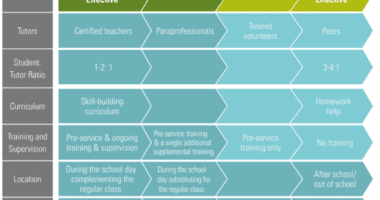Five Michigan Schools Recognized for Outstanding Academic Progress, Growth for Students who are Underserved
The new 2022 Building the Hope Schools collectively demonstrated pre-pandemic academic progress or growth that beat state averages, along with an affirming culture for diverse student populations, including students of color, English learners, and students from low-income backgrounds.
As schools across Michigan work to help students recover from the unfinished learning wrought by COVID-19, five Michigan public schools stand as examples for their outstanding pre-pandemic progress or growth for underserved student groups, offering strategies that can be leveraged for educational recovery.
At the 2022 Building the Hope Schools, the majority of students come from low-income backgrounds, and, at 80 % of the schools, the majority are students of color. At the same time, these public schools are in the top 25% for academic proficiency or for above average student growth for all Michigan students, making them outliers among Michigan schools. They are geographically diverse — located in Warren, Pontiac, Grand Rapids, Kentwood, and Tawas City – further underscoring the possibilities of success for Michigan’s students, no matter their families’ zip code or income.
“Building the Hope Schools truly represent what it means to provide opportunities for all students, demonstrating that our public schools can make great strides for our most underserved students while serving as culturally- and linguistically-affirming places for children from all backgrounds,” said Jen DeNeal, director for policy and research at The Education Trust-Midwest, a data-driven education policy, research, and advocacy organization that works to close gaps in opportunity and achievement for all children, particularly those from low-income backgrounds and students of color.
“We can learn so much from these schools and their educators,” DeNeal said. “Their successful pre-pandemic strategies can provide a roadmap, particularly as schools work to help our most underserved students who were most impacted during COVID-19 recover from the pandemic. They model the way for educational recovery by creating conditions to ensure that students from all backgrounds have the opportunity and supports needed to achieve at high levels.”
The five 2022 Building the Hope Schools are:
- Challenger Elementary in Kentwood, outside Grand Rapids
Selected as a Building the Hope School because its Black students, students from low-income backgrounds, and English learners (EL) all demonstrated growth above the state averages in both English Language Arts (ELA) and Math for three straight years. Challenger Elementary stands out due to its focus on data, as well as supportive, welcoming relationships with students and parents. The principal sets a welcoming tone from the time students arrive with her energy, excitement, and enthusiasm. Progress is monitored regularly to help identify gaps in students’ learning and how to push those already meeting grade-level standards. Teaching grade-level standards to all students and providing support where needed helps students make progress.
- Clara Bolen Elementary in Tawas City
Selected as a Building the Hope School because its students from low-income backgrounds demonstrated above average academic proficiency rates in both ELA and Math for three consecutive years, as well as the school’s dedicated focus on small-group instruction to meet student needs and its role as an intentional center of community in its town.
- Lean Elementary of Warren Consolidated schools
Selected as a Building the Hope School because its students from low-income backgrounds and English learners demonstrated growth above the state average in both ELA and Math for three straight years. Lean Elementary stands out with its intentional language support and instruction, its dedication to its school community, and attention to celebrating diverse communities. Culturally- and linguistically-affirming instructional practices are integral here. The school librarian makes a special point of having books with diverse characters in them, so students see themselves and know they matter. A strong working relationship between classroom teachers, English learner teachers, and Title I teachers helps build success.
- Walton Charter Academy in Pontiac
Selected as a Building the Hope School because its Latino students and English learners demonstrated growth above the state average in both ELA and Math for three consecutive years. Walton Charter Academy also stands out for its intentional outreach to the Latino community. The school makes a concerted effort to engage parents, helping to make non-native English-speaking parents feel comfortable and competent in the school. A teacher and a paraprofessional are assigned to every K-2 classroom, helping to ensure students have a strong foundation from the early grades.
- Vista Charter Academy in Grand Rapids
Selected as a Building the Hope School because its English learners demonstrated growth above the state average in both ELA and Math for three consecutive years. Vista Charter Academy stands out for its teachers’ attention to English learners’ needs in classroom instruction and data-driven instruction. A strong EL staff helps ensure EL students have the support they need. Students learn early to monitor their own progress through frequent assessments and data-monitoring, either weekly or bi-weekly.
This is the second year that The Education Trust-Midwest has named a cohort of Building the Hope Schools. To identify the schools, researchers conducted a comprehensive quantitative analysis of each school’s performance. The Ed Trust-Midwest analyses examined data for the 2016-17, 2017-18 and 2018-19 school years. Analysts and team members also conducted qualitative analyses through in-person visits and interviews of the schools’ learning environments before selecting the award winners. Each Building the Hope School will receive a $3,500 honorarium. (See website for more details: https://buildingthehopeschools.org/)
Additionally, one or more of the schools’ subgroups of students — Black, Latino, English learner, and students from low-income backgrounds, in particular — also are performing in the top 25% among Michigan’s high-growth public schools where data is available, making them true outliers in the state of Michigan. The schools as a whole have culturally- and linguistically-responsive school-wide practices — including instructional practices — that facilitate students’ outstanding academic progress and growth. All of the schools are Michigan public schools — three traditional public schools and two charter schools.
“We celebrate these schools and their educators for building the hope on what we believe is possible for all of Michigan’s schools and districts. They show us how to make real progress to improve student achievement and access to opportunity for all students,” DeNeal said.
_________________________
The Education Trust-Midwest is thankful for the W.K. Kellogg Foundation for its commitment to help young children thrive and its support of the 2022 Building the Hope Schools.

